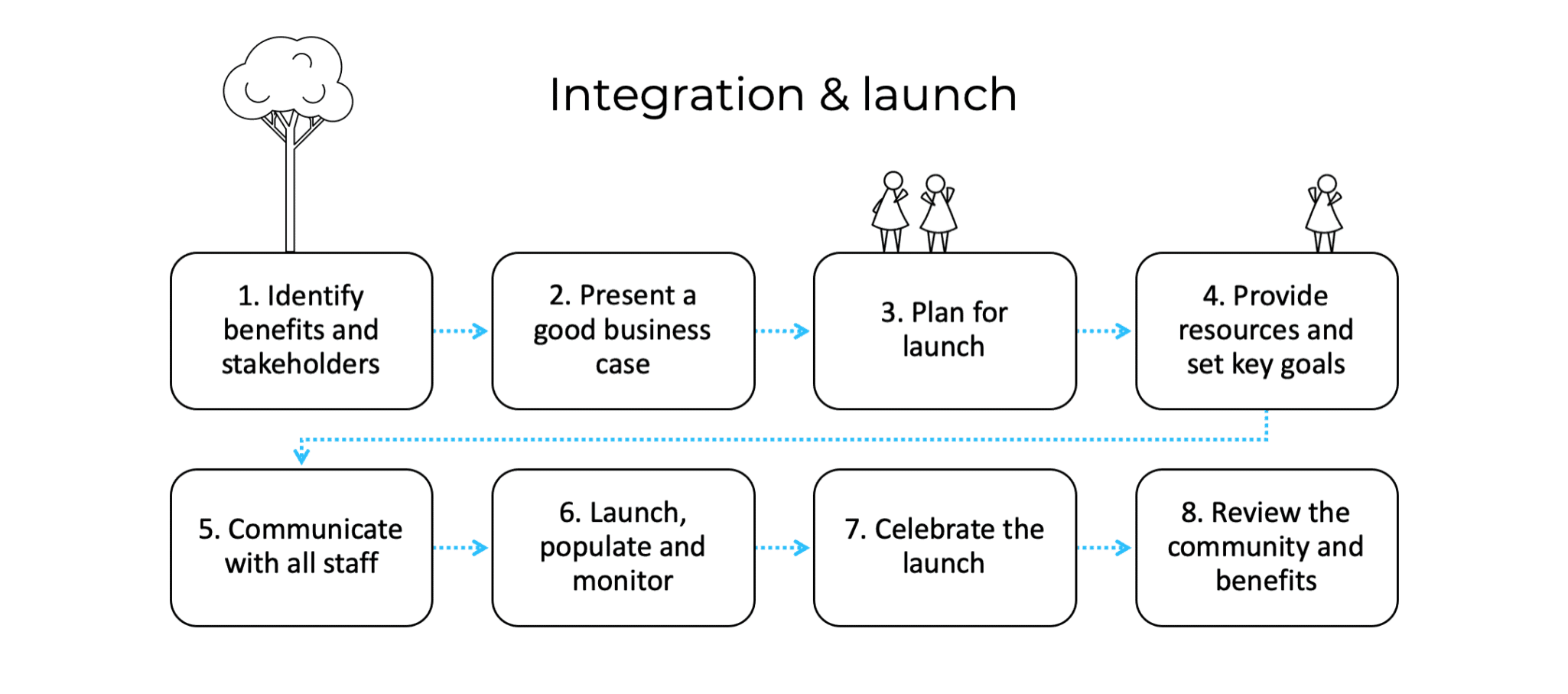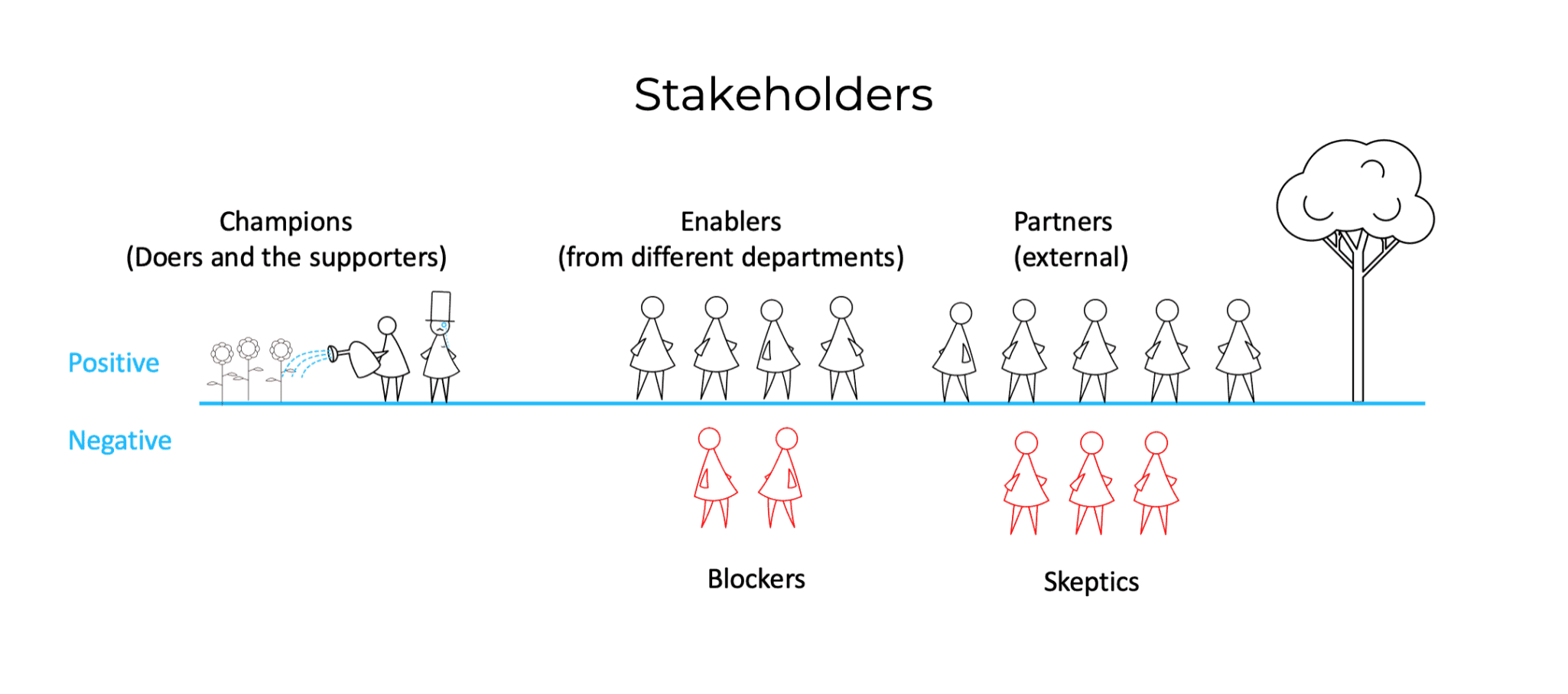Filter by Category
Filter by Category
Contents
Why is full branded integration essential?
Branded communities that prosper are those that are integrated into the parent company. Full integration maximises the benefits of the community to the company and results in maximum return on investment through a combination of cost savings and revenue generation. By enabling a direct relationship with customers and the market, communities deliver long- term value and so continue to have a reason to exist long after the champions of the project have moved on to the next idea. We have put together 8 steps to ensure full integration.

1. Identify the benefits of having a community and who the key stakeholders are
There is little point launching without understanding the benefits of a branded community. We suggest that most communities have the potential to benefit multiple business functions (sales, marketing, product development) . Mapping out these benefits and establishing who should be involved.
Community Stakeholders:

– Champions (project owner and c-level support)
There are two types of community champions; the doers and the supporters. In my experience, a community in a large organisation needs both. Strong C-level support forces the more skeptical staff to take the project seriously and removes barriers to adoption. The doers plan and managed the launch and work to bring departments on board.
– Enablers (in each department that is involved)
Every department involved in the launch and adoption of a community needs enablers. They will make it easier to integrate the business functions and derive benefits from the community.

– Partners (external resources)
Consultants, community experts and companies that provide apps/platforms like Disciple. The will advise and help configure you to maximise benefits.
– Skeptics
Introducing a community and using it for various roles represents a change for most companies. Naturally there are those who will be skeptical of change. They can often been won over by explaining clear benefits (especially ROI). Try getting them involved and agreeing on small wins for their business function. This will hopefully convince them of the power of community.
– Blockers
A level above the skeptics. These are people who either see the community as a threat or are convinced that it is a waste of money. They will actively seek to stop it from being created. Typically, they come from functions such as marketing or customer service which fiercely protect their role and budget. If they cannot be convinced then they must be overruled or bypassed.

– Project team
A good community project teams includes those experienced with project management, customer relations and content creation. Ideally, it also include an experienced community manager.
2. Present a good business case
Run the numbers, make lists of the tangible and intangible benefits of a branded community to your company and customers. Have enablers in each department drill down and calculate numbers.
3. Plan for launch
Launching a community requires multiple steps from establishing purpose, to configuring, creating launch content, testing, getting early members, expanding etc. This has to be planned and the steps and content required by each business function established. Integration with the procedures of business departments is important. For example, how do we deal with a customer service request in the community? How should product suggestion be handled, is there a way to create product testing groups?
4. Provide resources and set key goals
What are the long and short-term goals for the community and for each function. What resources are needed for the project and department? What are the costs?

5. Communicate with all staff in relevant departments and beyond
Communicate the plan for launch, benefits and role with all staff in relevant departments.
6. Launch, populate and monitor
Build and soft launch the community by filling it with content and active community members. Have the enablers actively participate in the community. Monitor the early performance to identify strengths and weaknesses.
7. Celebrate the launch
Fully launching is a big thing. It should be announced and celebrated by the whole company and all business functions. Effort should be made to inform and welcome customers, encouraging them to be involved by becoming members.

8. Review the community and benefits with all relevant departments and community champions
Regularly review the community and performance against KPIs for each department, plan corrective action and take advantage of strengths. Plan long-term growth and benefit strategies. As the community grows and evolves look at integrating new departments and business functions.
Hopefully you find all these tips on integration useful when launching your community. If you do let us know!
Disciple Team in
27 September, 2021
4 min read
Share:

See how Disciple can fit your business needs
See how a Disciple community
can fit your business needs
See how a Disciple community can fit your business needs
Related Articles
18 min read
How To Build Your Online Community From Scratch
Wondering how to create a community? How to turn your social media presence into a thriving online community? …
8 min read
How the Best Businesses Build Brand Communities (+Examples)
No matter the name of your brand, the industry you operate in, the products you make or the …
9 min read






